#seyss-inquart
Explore tagged Tumblr posts
Text
I'm not sure what the hell is going on with Heydrich's face. Is he glaring at Himmler? The photographer? Bored? Amused? Tired of standing? Wanting to start shit?
According to Getty Images
"German dictator Adolf Hitler talks to Dr Artur von Seyss-Inquart, the last Chancellor of Austria, after Hitler's speech in the Heldenplatz, Vienna, announcing Germany's take over of Austria. Heinrich Himmler and Reinhard Heydrich are in the background."
Thanks Getty, that wasn't useful. Therefore I will be going with wanting to start shit.
The other picture in the series also shows another shot of the same thing and just as helpful as before. Again, Heydrich is giving the side eye.
However, in this pic you get the same assholes but it appears behind Himmler there is a rogue Ernst Kaltenbrunner in the shot. A Kaltenbrunner photo bomb moment, certainly.


Rare pic of Adi :3 Himmler and Reinhard also in the background
#wwii era#ww2 history#ww2#wwii#ww2 germany#wwii germany#3rd reich#reichblr#heydrich#reinhard heydrich#austrian painter#ernst kaltenbrunner#heinrich himmler#Seyss-Inquart
58 notes
·
View notes
Text
Umpcoming fics ִֶָ𓂃 ࣪˖ ִֶָ🐇་༘࿐
Hans joachim Marseille x Erich hartmann - in progress
Eva Braun - in progress
Fem!AH x Fem!Goebbels
Austrian painter x fem!reader x himmler
AH x adopted son
The Dog fic
Heydrich x fem reader
Joachim peiper x reader smut
Joachim peiper x reader angst
Eva Braun x reader platonic
prince joachim of prussia angst
sub Joseph Goebbels with gn! time traveler! reader smut
alfred Rosenberg and fem!reader
Vasily Stalin smut
josef mengele smut
Adolf Eichmann & Josef Mengele cuntboys
amon göth x fem reader smut
Donny Donowitz x young teenage reader
mussolini x reader smut
Hans joachim Marseille x reader fluff
Erich Raeder x a male reader smut
Erich rudorffer x reader fluff
Dieter Hellstrom x female resistance member smut
Dom!Rudolf Hess x fem!Reader
Heydrich x reader
Ernst Kaltenbrunner x reader
Arthur seyss inquart x fem reader smut
knife x reader
austrain painter reader
l'll get through it!! let me know if you want a fic done just tell me and I'll do it. also tell me if you have specific ideas for a fic it can make it quicker!!
#reichblr#reich fandom#ww2#3rd reich#reich fics#wwii era#luftwaffe#ww2 germany#joseph goebbels#erich hartmann#reinhard heydrich#austrian painter#inglorious basterds#erich rudorffer#rudolf hess
54 notes
·
View notes
Text





Hi guys...anyone w a FULL Rosenberg detention report (also includes the one Goering has in the pic + the thumbprint thingy) and also a Frick , Seyss Inquart and Hans Frank detention report pls dm me ( and also Kaltenbrunner's detention report, IF he has one )
7 notes
·
View notes
Text
Ahhhh. Another bag of shite that doesn't get recognized nearly enough for the horror, pain, and murder he caused.
Odilo Globočnik was a nazi from Austria and a perpetrator of the Holocaust. Let me get something straight. Most members of the SS were, in some way, linked to the Holocaust.
Globočnik was a high ranked mber of the SS. He played a leading role in Operation Reinhard, the organized murder of around one and a half million Jews, mostly of Polish origin, during the Holocaust in the Majdanek, Treblinka, Sobibór and Bełżec extermination camps.
Historian Michael Allen described him as "the vilest individual in the vilest organization ever known".
Luckily, this bag killed himself shortly after his capture and detention by British soldiers. Once again, he knew he was on the wrong side of history and couldn't stand up for his "ideology".
In August 1933, Globočnik was arrested for the first time. Why? For his attempt to contact imprisoned nazis in Klagenfurt. In the same year, he became a member of the Austrian SS. He was arrested due to his public support for the nazi Party (NSDAP), as he had become a member of the party in 1931 while he was in Carinthia. Although he was arrested four times between 1933 and 1935, he served just over a year in jail on various political charges.
Heinrich Himmler intervened on his behalf, after two years of arguments between Globočnik and the authorities.
His first documented activity for the NSDAP occurred in 1931 when he was documented as distributing propaganda for the party. By then, he had nearly abandoned his work as a building tradesman, and attached himself very closely to the NSDAP. He was assigned to develop a courier and intelligence service for the NSDAP, which channelled funds from Germany into Austria.
In June 1933, in Vienna, Jewish jeweller Norbert Futterweit was killed when a bomb was thrown at his shop. This was among the earliest murders in Austria attributable to the nazis, and a number of historians believe that Globočnik was involved in the attack.
Globočnik joined the SS on 1 September 1934. His devotion to the nazi cause paid off, as he was quickly promoted in the party apparatus in Austria.
He became a Deputy Gauleiter briefly in Vienna and then in Carinthia between January and May 1933. He was appointed as the head of the party intelligence apparatus in Carinthia, serving from 1934 to 1936.
From September 1936 to May 1938, he served as the Chief of Staff of the National Leadership of the Austrian nazi Party under Hubert Klausner.
Globočnik was a key player in the usurpation of the Austrian government by the nazis. With the Anschluss, Nazi Germany annexed Austria on 12 March 1938.
Globočnik was rewarded with an appointment as a State Secretary in the nazi government, established by Arthur Seyss-Inquart on 15 March. On 10 April 1938, he was elected to the Reichstag. Next came his appointment as Gauleiter of Vienna on 22 May 1938 by the Austrian dude.
Early gestures of accommodation to the new government by Cardinal Innitzer did not assuage the Austrian nazi radicals, foremost among them being Globočnik. He launched a crusade against the Church, and the nazis confiscated property, closed Catholic organisations and sent many priests to Dachau. Anger at the treatment of the Church in Austria grew quickly, and in October 1938 the first act of overt mass resistance to the new regime took place. A rally of thousands left Mass in Vienna chanting "Christ is our Führer". Okay, a wee bit odd but whatever.
Globočnik was relieved of his posts and stripped of his party honours on 30 January 1939, when it was discovered that he was involved in illegal foreign currency speculation. As punishment, Himmler transferred Globočnik to the Waffen-SS, in the rank of junior sergeant (Unterscharführer), where he served with SS Standarte "Germania" during the Polish campaign. Himmler liked Globočnik and recognised his value. In late 1939, Globočnik was pardoned, promoted to SS-Brigadeführer, and assigned to Lublin province. Fucking Himmler, chinless little toady that he was.
On 16 February 1940, Globočnik declared: "The evacuated Jews should feed themselves and be supported by their countrymen, as these Jews have enough [food]. If this does not succeed, one should let them starve." Lovely gentleman he was not.
There are indications that Globočnik, along with a chief accomplice Christian Wirth, may have originated the concept of the extermination camp and industrialised murder, and suggested the concept to Himmler. However, it is hearsay to a certain extent.
Globočnik received verbal approval from chinless dude, errrr Himmler, to begin construction of the Belzec extermination camp.
On 14 October 1941 – the day after he had met with Globočnik – Himmler held a five-hour meeting with Reinhard Heydrich to discuss "executions", following which other extermination camp gassing sites were built.
Days later, Himmler forbade all further Jewish emigration from Reich territory "in view of the forthcoming 'Final Solution' to the Jewish question.
Yes, yes, hello Reinhard. Yes, the place smells like sulfer and it's very hot. Not my problem bruh. You brought that shit on yourself. Assbutt.
With the advance of Allied troops in 1945, Globočnik retreated into Austrian Carinthia and finally went into hiding high in the mountains near Weissensee, still in the company of his closest staff members.
Globočnik was tracked down and captured by a British armoured cavalry unit on 31 May 1945 in Carinthia, Austria. A unit from the 4th Queen's Own Hussars, found him on the Möslacher Alm, a 1,250 m (4,100 ft) mountain in the Eastern Alps, with seven other wanted Nazis: Georg Michalsen, Friedrich Rainer, Ernst Lerch, Hermann Höfle, Karl Hellesberger, Hugo Herzog and Friedrich Plöb. Globočnik was taken to Paternion in Villach-Land District to be interrogated. However, before he was questioned, Globočnik committed suicide by biting on a cyanide capsule. Insert chicken clucking here. No wonder Himmler couldn't maintain a chicken farm, they were all chickenshits.
Globočnik's body was taken to be buried in a local churchyard, but the priest reportedly refused to have "the body of such a man" resting in consecrated ground. A grave was dug outside the churchyard, next to an outer wall, and the body was buried without ceremony. Fitting. Very fitting.
For a little curveball into matters, it was speculated that his death came at the hands of either partisans or a Jewish revenge squad, or that he was turned over alive to US intelligence by the British. In the 1980s it was proven that this information was indeed false. The bastard took his own life. Bwak! Bwak!
(Can y'all tell someone is feeling kind of bitchy today?)

#wwii era#ww2 history#wwii#ww2#ww2 germany#wwii germany#reichblr#3rd reich#Odilo Globočnik#Globočnik
6 notes
·
View notes
Text
Le 1er octobre 1946, tombait le verdict du procès de Nuremberg, avec condamnation à la pendaison de Göring, von Ribbentrop, Keitel, Kaltenbrunner, Rosenberg, Frank, Frick, Streichner, Sauckel, Jodl, Seyss-Inquart et Bormann (en fuite).
Julius Streichner était le journaliste…
4 notes
·
View notes
Text
“Free Palestine! Free Sudan!”
You do realize the people you want freed in “Palestine” are the people Sudan needs to be freed from, right? All of Sudan’s problems are the work of Arab Muslims, most of them I think even specifically Levantines like Palestinians are.
“Down with Hitler! Up with Seyss-Inquart!”
9 notes
·
View notes
Text
Today the Church remembers St. Edith Stein, Martyr.
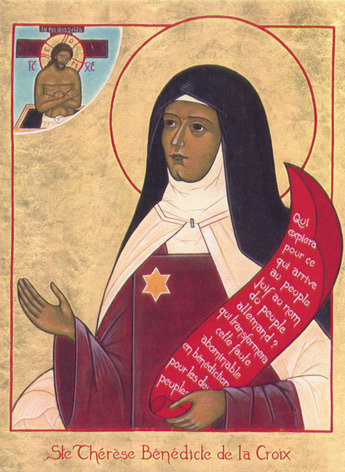
Ora pro nobis.
St. Edith (12 October 1891 – 9 August 1942) was a brilliant philosopher who stopped believing in God when she was 14. Even so, she became so captivated by reading the autobiography of Teresa of Avila that she began a spiritual journey that led to her baptism in 1922. Twelve years later she imitated Saint Teresa by becoming a Carmelite, taking the name Teresa Benedicta of the Cross.
Born into a prominent, religious Jewish family in Breslau, Germany—now Wrocław, Poland—Edith abandoned Judaism in her teens. Moved by the tragedies of World War I, in 1915, she took lessons to become a nursing assistant and worked in an infectious diseases hospital. As a student at the University of Freiburg, she became fascinated by phenomenology–an approach to philosophy. Excelling as a protégé of Edmund Husserl, one of the leading phenomenologists, Edith earned a doctorate in philosophy in 1916. She continued as a university teacher until 1922, when she moved to a Dominican school in Speyer; her appointment as lecturer at the Educational Institute of Munich ended under pressure from the Nazis.
She was baptized on 1 January 1922 in the Roman Catholic Church. At that point, she wanted to become a Discalced Carmelite nun but was dissuaded by her spiritual mentor, the abbot of Beuron Archabbey. She then taught at a Catholic school of education in Speyer. As a result of the requirement of an "Aryan certificate" for civil servants promulgated by the Nazi government in April 1933 as part of its Law for the Restoration of the Professional Civil Service, she had to quit her teaching position.
She was finally admitted as a postulant to the Discalced Carmelite monastery in Cologne on 14 October, on the first vespers of the feast of Saint Teresa of Ávila, and received the religious habit as a novice in April 1934, taking the religious name Teresia Benedicta a Cruce (Teresia in remembrance of Teresa of Ávila, Benedicta in honour of Benedict of Nursia). She made her temporary vows on 21 April 1935, and her perpetual vows on 21 April 1938.
The same year, Teresa Benedicta a Cruce and her biological sister Rosa, by then also a convert and an extern (tertiary of the Order, who would handle the community's needs outside the monastery), were sent to the Carmelite monastery in Echt, Netherlands, for their safety. Ultimately, she would not be safe in the Netherlands. The Dutch Bishops' Conference had a public statement read in all churches across the nation on 20 July 1942 condemning the genocidal racism of National Socialism. In a retaliatory response, on 26 July 1942, the Reichskommissar of the Netherlands, Arthur Seyss-Inquart, ordered the arrest of all Jewish converts who had previously been spared. Along with two hundred and forty-two baptized Jews living in the Netherlands, Stein and her sister Tosa were arrested by the SS on 2 August 1942. Stein and her sister Rosa were imprisoned at the concentration camps of Amersfoort and Westerbork before being moved to Auschwitz. A Dutch official at Westerbork was so impressed by her sense of faith and calm that he offered her an escape plan. Stein vehemently refused his assistance, stating: "If somebody intervened at this point and took away my chance to share in the fate of my brothers and sisters, that would be utter annihilation."
On 7 August 1942, early in the morning, 987 Jews were moved to the Auschwitz concentration camp. They, along with Teresa Benedicta and her sister Rosa, were murdered by the National Socialists in a gas chamber in Auschwitz on 9 August 1942.
Pope St. John Paul II beatified Teresa Benedicta of the Cross in 1987 and canonized her 12 years later, and named her one of the six patron saints of Europe.
The miracle that was the basis for her canonization is the cure of Benedicta McCarthy, a little girl who had swallowed a large amount of paracetamol (acetaminophen), which causes hepatic necrosis. The young girl's father, Emmanuel Charles McCarthy, a priest of the Melkite Greek Catholic Church, immediately called together relatives and prayed for Teresa's intercession. Shortly thereafter, the nurses in the intensive care unit saw her sit up, completely healthy. Ronald Kleinman, a pediatric specialist at Massachusetts General Hospital in Boston who treated the girl, testified about her recovery to church tribunals, stating: "I was willing to say that it was miraculous." McCarthy would later attend Sr. Teresa Benedicta's canonization.
The writings of Edith Stein fill 17 volumes, many of which have been translated into English. A woman of integrity, she followed the truth wherever it led her. One of the more profound things that she wrote was,
“Do not accept anything as truth that lacks Love. Do not accept anything as love which lacks truth. One without the other is a destructive lie.”
Almighty God, by whose grace and power your holy martyr Edith triumphed over suffering and was faithful even to death: Grant us, who now remember her in thanksgiving, to be so faithful in our witness to you in this world, that we may receive with her the crown of life; through Jesus Christ our Lord, who lives and reigns with you and the Holy Spirit, one God, forever and ever.
Amen.
2 notes
·
View notes
Video
youtube
Arthur Seyss-Inquart & The Holocaust in the Netherlands Documentary
0 notes
Text
5. Remember professional ethics
When political leaders set a negative example, professional commitments to just practice become more important. It is hard to subvert a rule of law state without lawyers, or to hold show trials without judges. Authoritarians need obedient civil servants, and concentration camp directors seek businessmen interested in cheap labor. ------------------------------------------------------------------------------ Before the second world war, a man named Hans Frank was Hitler's personal lawyer. After Germany invaded Poland in 1939, Frank became the governor-general of occupied Poland, a German colony where millions of Jews and other Polish citizens were murdered. He once boasted that there were not enough trees to make paper for posters that would be needed to announce all of the executions. Frank claimed that law was meant to serve the race, and so what seemed good for the race was therefore the law. With arguments like this, German lawyers could convince themselves that laws and rules were there to serve their projects of conquest and deconstruction, rather than to hinder them.
The man Hitler chose to oversee the annexation of Austria, Arthur Seyss-Inquart, was a lawyer who later ran the occupation of the Netherlands. Lawyers were vastly over-represented among the commanders of the Einsatzgruppen, The special task forces who carried out the mass murder of Jews, Gypsies, Polish elites, communists, the handicapped, and others. German (and other) physicians took part in ghastly medical experiments in the concentration camps. Businessmen from I.G. Farben and other German firms exploited the labor of concentration camp inmates, Jews in ghettos, and prisoners of war. Civil servants, from ministers down to secretaries, oversaw and recorded it all.
If lawyers had followed the norm of no execution without trial, if doctors had accepted the rule of no surgery without consent, if businessmen had endorsed the prohibition of slavery, if bureaucrats had refused to handle paperwork involving murder, then the Nazi regime would have been much harder pressed to carry out the atrocities by which we remember it.
Professions can create forms of ethical conversation that are impossible between a lonely individual and a distant government. If members of professions think of themselves as groups with common interests, with norms and rules that oblige them at all times, then they can gain confidence and indeed a certain kind of power. Professional ethics must guide us precisely when we are told that the situation is exceptional. Then there is no such thing as "just following orders." If members of the professions confuse their specific ethics with the emotions of the moment, however, they can find themselves saying and doing things that they might previously have thought unimaginable.
-On Tyranny ( Timothy Snyder)
#timothy snyder#on tyranny#Lesson 5#Remember Professional Ethics#full chapter from timothy snyders book on tyranny
0 notes
Text

Himmler with Hans Frank and Arthur Seyss-Inquart
46 notes
·
View notes
Photo




Hellsing Ultimate: 9
This is the Commander of Zeppelin Three, the Arthur Seyss-Inquart. We are losing lift. All inter communication ship systems are out.
Zeppelin Three is going down.
#hellsing#hellsing ultimate#gifs#idk if arthur seyss inquart is correct? I just took it from the subtitles for the scene#¯\_(ツ)_/¯
115 notes
·
View notes
Text

• Operations Manna & Chowhound
Operation Manna and Operation Chowhound were co-British & American humanitarian food drops, carried out to relieve a famine in the German-occupied Netherlands, undertaken by Allied bomber crews during the final days of World War II in Europe.
By early 1945, the situation was growing desperate for the three million or more Dutch still under German control. Prince Bernhard appealed directly to Allied Supreme Commander Dwight D. Eisenhower, but Eisenhower did not have the authority to negotiate a truce with the Germans. While the prince got permission from British Prime Minister Winston Churchill and U.S. President Franklin D. Roosevelt, Eisenhower had Air Commodore Andrew Geddes begin planning immediately. On April 23rd, authorisation was given by the Chief of Staff, George Marshall. Allied agents negotiated with Reichskommissar Arthur Seyss-Inquart and a team of German officers. Among the participants were the Canadian future writer Farley Mowat and the German commander-in-chief, General Johannes Blaskowitz. It was agreed that the participating aircraft would not be fired upon within specified air corridors.
The British operation started first. It was named after the food which was miraculously provided to the Israelites in the Book of Exodus. The planning of the operation was initially done by the Royal Air Force. The first of the two RAF Avro Lancasters chosen for the test flight, the morning of April 29th,1945, was nicknamed Bad Penny, as in the expression: "a bad penny always turns up". This bomber, with a crew of seven young men including pilot Robert Upcott of Windsor, Ontario, took off in bad weather despite the fact that the Germans had not yet agreed to a ceasefire. Bad Penny had to fly low, down to 50 feet (15 m), over German guns, but succeeded in dropping her cargo and returning to her airfield. Operation Manna then began in earnest. British aircraft from Groups 1, 3, and 8 took part, flying 145 sorties by Mosquitoes and 3,156 sorties by Lancaster bombers, flying between them a total of 3,301 sorties. These bombers were used to dropping bombs from 6,000 metres (20,000 ft), but this time they had to do their job from a height of 150 metres (490 ft), some even flying as low as 120 metres (390 ft), as the cargo did not have parachutes. The drop zones, marked by Mosquitoes from 105 and 109 Squadrons using Oboe, were: Katwijk (Valkenburg airfield), The Hague (Duindigt horse race course and Ypenburg airfield), Rotterdam (Waalhaven airfield and Kralingse Plas) and Gouda. Bomber Command delivered a total of 6,680 tons of food. Some examples of food dropped was tinned food, dried food and chocolate.
The idea was for people to gather and redistribute the food, but some could not resist eating straight away, which caused some people to get sick and vomit, (and some died) a result that fatty food can have in starved bodies known as Refeeding syndrome. On the other hand, distribution sometimes took as long as ten days, resulting in some getting the food only after the liberation. Nevertheless, many lives were saved, and it gave hope and the feeling that the war would soon be over. Earlier, there had been a distribution of white bread made from Swedish flour that was shipped in and baked locally. A popular myth holds that this bread was dropped from aircraft, but that is a mix-up between the two events. Also, the food was not dropped with parachutes.
On the American side, ten bomb groups of the US Third Air Division flew 2,268 sorties beginning on May 1st, delivering a total of 4000 tons. 400 B-17 Flying Fortress bombers of the United States Army Air Forces dropped 800 tons of K-rations between May 1st to the 3rd on Amsterdam Schiphol Airport. At least one B-17 crew, that of the Stork Club from the 550th squadron received battle recognition despite having no guns for their humanitarian mission, as a result of German flak. Allied aircraft transported more than 11,000 tons of food, saved thousands of lives and set a valuable precedent for the Berlin Airlift in 1948 and 1949 and future humanitarian missions to come. For Seyss-Inquart, his acquiescence to the flights was not enough to save him. After the war, he was tried and convicted as a war criminal at Nuremberg and subsequently executed. At the height of the relief effort, more than 900 bombers a day took to the skies. Although a handful of American aircraft were hit by sporadic German ground fire, none were shot down. As food and salvation fell from the skies, crews saw for themselves the gratitude of the Dutch people in messages such as the field of manicured tulips arranged by one grateful farmer to spell out, “Thank You".
#world war 2#second world war#world war ii#history#humanitarian#wwii#british history#aviation#american history#royal air force#u.s history#us aircraft#us army air force#netherlands#dutch history
81 notes
·
View notes
Photo

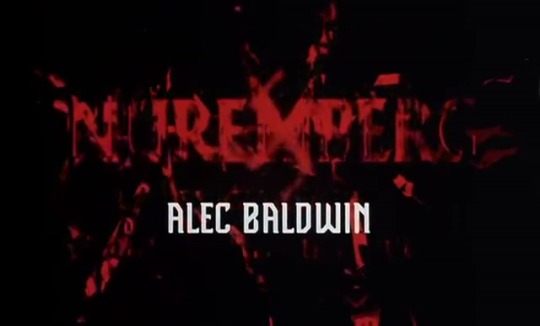
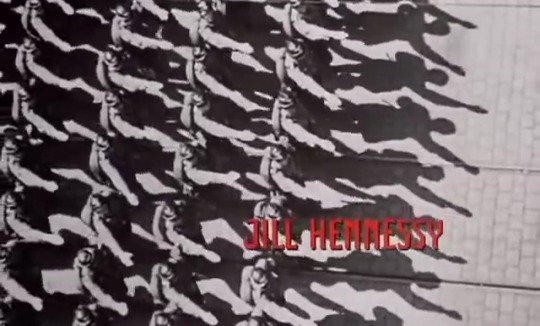

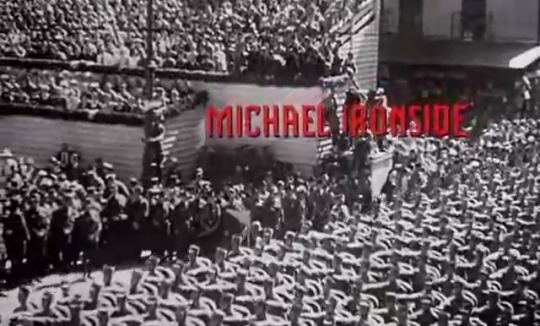
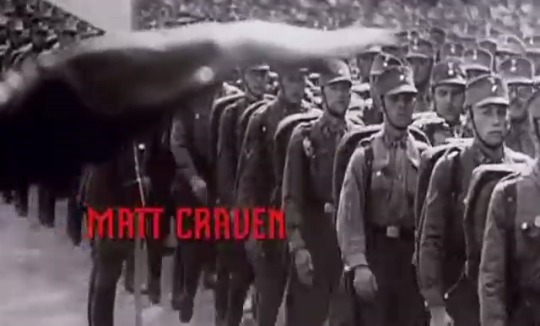
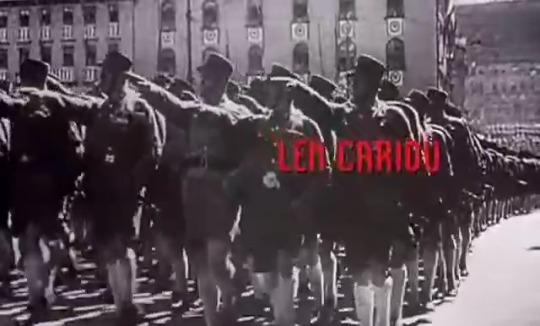
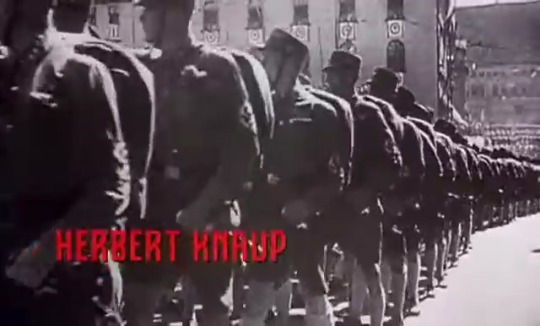


Nuremberg - TNT - July 16 - 17, 2000
Historical Drama (2 episodes)
Running Time: 180 minutes
Stars:
Alec Baldwin as Supreme Court Justice Robert H. Jackson
Brian Cox as Hermann Göring
Christopher Plummer as Sir David Maxwell Fyfe
Jill Hennessy as Elsie Douglas
Matt Craven as Capt. Gustave Gilbert
Christopher Heyerdahl as Ernst Kaltenbrunner
Roger Dunn as Col. Robert Storey
David McIlwraith as Col. John Amen
Christopher Shyer as Brig. Gen. Telford Taylor
Hrothgar Mathews as Thomas J. Dodd
Herbert Knaup as Albert Speer
Frank Moore as Hans Frank
Frank Fontaine as Wilhelm Keitel
Raymond Cloutier as Karl Dönitz
Bill Corday as Alfred Jodl
Ken Kramer as Fritz Sauckel
Max von Sydow as Samuel Rosenman
Sam Stone as Julius Streicher
Douglas O'Keeffe as Baldur von Schirach
Benoit Girard as Joachim von Ribbentrop
James Bradford as Hjalmar Schacht
Frank Burns as Wilhelm Frick
Erwin Potitt as Walther Funk
Tom Rack as Hans Fritzsche
Roc LaFortune as Rudolf Hess
Colm Feore as Rudolf Höss
Robert Joy as Anton Pachelogg
Dennis St. John as Franz von Papen
Griffith Brewer as Konstantin von Neurath
Gabriel Gascon as Erich Raeder
Julien Poulin as Dr. Robert Ley
Alain Fournier as Alfred Rosenberg
René Gagnon as Arthur Seyss-Inquart
Len Cariou as Francis Biddle
David Francis as Geoffrey Lawrence, 1st Baron Oaksey
Len Doncheff as Gen. Iona Nikitchenko
Paul Hébert as Henri Donnedieu de Vabres
Michael Ironside as Col. Burton C. Andrus
Charlotte Gainsbourg as Marie-Claude Vaillant-Couturier
Geoffrey Pounsett as Maj. Airey Neave
Steve Adams as Gen. Lucius D. Clay
Paul Hopkins as Capt. Dan Kiley
Susan Glover as Emmy Göring
Scott Gibson as Lt. Tex Wheelis
#Nuremberg#TV#Historical Drama#TNT#2000#Title#Alec Baldwin#Jill Hennessy#Brian Cox#Christopher Cox#Michael Ironside#Matt Craven#Len Cariou#Herbert Knaup#Charlotte Gainsbourg#Colm Feore#Robert Joy#Max Von Sydow#Christopher Plummer
12 notes
·
View notes
Text
Il y a tout juste soixante-quatorze ans, le 1er octobre 1946, tombait le verdict du procès de Nuremberg, avec condamnation à la pendaison de Göring, von Ribbentrop, Keitel, Kaltenbrunner, Rosenberg, Frank, Frick, Streichner, Sauckel, Jodl, Seyss-Inquart et Bormann (en fuite ou disparu). Hess, Funk, Dönitz, Raeder, von Schirach et Speer sont condamnés à la prison. De façon un peu surprenante, Schacht, von Papen et Fritzche sont acquittés.
2 notes
·
View notes
Photo

Seyss-Inquart bunker, Wassenaar, August Kubitza, 1942-43.
Arthur Seyss-Inquart served as the Nazi Reichskommissar of the occupied Netherlands. The bunker was camouflaged as a farmhouse, became a national heritage site in 2015 and is currently for sale.
62 notes
·
View notes






